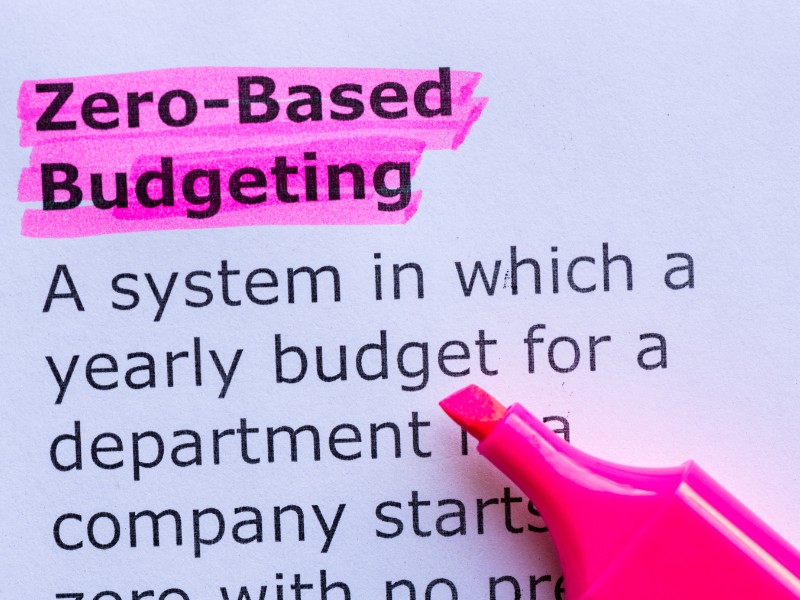The 50/30/20 Method: Simple Budgeting for Every Household

This post may contain affiliate links. At no cost to you, we earn a commission from qualifying purchases.
Money management can be a daunting task, and the sheer number of budgeting methods available can be overwhelming. But there’s one approach that stands out for its simplicity and effectiveness: the 50/30/20 rule.
Created by U.S. Senator Elizabeth Warren, this budgeting principle has been widely adopted because it provides a straightforward framework for any household. Here’s a rundown of what it is and how it can help you achieve financial stability.
What is the 50/30/20 Rule?
The 50/30/20 rule offers a simple formula for dividing your income into three main categories:
- 50% goes to “Needs”: This includes essential expenditures like rent or mortgage, utilities, food, and transport.
- 30% is for “Wants”: These are discretionary expenses, such as dining out, entertainment, and shopping.
- 20% is for “Savings”: This portion is set aside for the future, whether it’s a rainy day fund, investments, or debt repayment.
The beauty of this rule lies in its flexibility and straightforwardness. You don’t need to be a financial whiz to make it work; all that’s required is a basic understanding of your income and expenses.
Diving Deeper into Tracking Your Income and Expenses
Before you can successfully budget, you need to know exactly how much money you’re bringing in each month. Most people think immediately of their salary, but it’s essential to consider all sources of income. This includes:
- Salary: Your monthly take-home pay after tax and other deductions.
- Bonuses: These can be performance-related or tied to specific achievements.
- Additional Income Streams: This could be freelance work, a part-time job, rental income, or even a profitable hobby.
Combine all these to get a comprehensive view of your monthly income.
Unpacking Your Expenses
The Basics
The next step is figuring out where your money is going each month. To get a detailed look at your spending, start by examining your bank statements, or consider using a budgeting app that categorises expenses for you.
Some popular UK-based budgeting apps include Money Dashboard, Snoop, and PocketGuard. These apps make it easier to track your expenditures and can often automatically categorise them into ‘Needs’, ‘Wants’, and ‘Savings’.
‘Needs’
This category includes everything you absolutely can’t do without—housing costs like rent or mortgage, utilities such as electricity and gas, groceries, and necessary transport. Don’t forget about less frequent but still crucial expenses like insurance premiums or council tax.
These are non-negotiable and should make up roughly 50% of your spending according to the 50/30/20 rule.
‘Wants’
This is the category that typically requires the most scrutiny. While we all enjoy dining out, shopping sprees, and other forms of entertainment, these expenses can add up quickly. Review this category to identify areas where you could potentially cut back. Remember, according to the rule, ‘Wants’ should account for about 30% of your income.
‘Savings’
The last category includes savings and investments. This could be your regular contributions to a savings account, investments in stocks or mutual funds, or paying off debts more quickly. The goal is to allocate about 20% of your income to this category.
If you find that your current savings rate is lower than this, you may need to reevaluate your ‘Wants’ or even some ‘Needs’ to free up more funds for savings.
Applying the Percentages
Once you’ve categorised all your expenses, you’ll want to see how closely they align with the 50/30/20 percentages.
For example, if you find that you’re spending 60% on ‘Needs’, only 15% on ‘Wants’, and just 5% on ‘Savings’, you’ll know that you have some adjustments to make. The aim is to realign your spending to fit these guidelines more closely, to ensure a more balanced financial life.
Fine-Tuning Your Finances: Making Adjustments in the 50/30/20 Rule
Acknowledge the Imbalance
Firstly, it’s important to acknowledge that the initial evaluation might show an imbalance in your spending, and that’s perfectly okay. Very few people are going to hit the 50/30/20 ratios spot-on from the get-go. The main goal of this process is to identify the areas where you might be over or under-spending, so you can take actionable steps to rectify the situation.
Reallocation Strategies
From ‘Wants’ to ‘Savings’
One of the most common imbalances people find is an overspending in the ‘Wants’ category. Cutting back here can be one of the easiest ways to reallocate funds to the ‘Savings’ section of your budget. Take a closer look at the discretionary expenses you’ve listed. Are there some that aren’t as necessary as they seemed at first glance?
Reducing the frequency of dining out or cancelling unused subscriptions are simple but effective ways to reduce these kinds of expenses.
From ‘Needs’ to ‘Wants’ or ‘Savings’
On the other hand, you might find that a large portion of your income is going into ‘Needs’. While these are essential expenditures, there may still be room for optimisation.
For example, can you negotiate a better deal on your utility bills? Or perhaps carpool to work to save on fuel costs? Sometimes, even changing where you shop for groceries can make a difference.
Any savings can then be channelled either into ‘Wants’ for better life enjoyment or into ‘Savings’ for future stability.
Revisiting Debt Repayment
If you have debts, whether it’s credit card balances or loans, consider your repayment strategy. Interest on debt can be a major drain on your resources, making it harder to allocate funds according to the 50/30/20 rule.
If you find that much of your ‘Savings’ portion is going towards debt repayment, it might be beneficial to focus on paying off high-interest debts more aggressively. This would free up more money in the long run for genuine saving and investing.
Setting Goals and Limits
One way to help you stick to the newly adjusted budget is to set specific goals and limits. For instance, allocate a fixed amount for dining out each month and don’t exceed it. Have a savings goal that aligns with your long-term plans, be it buying a house, travelling, or retirement. Having a clear goal can provide the necessary motivation to stick to your budget.
Run a Trial
Before setting your adjustments in stone, consider running a one- to three-month trial. Track all your expenses and income meticulously during this period to see how well your new budget fits with your lifestyle. This trial phase will give you an opportunity to make further adjustments if necessary.
Continual Adaptation: Review and Refine Your Budget
Understanding the Fluid Nature of Finances
First and foremost, it’s crucial to understand that budgeting is not a one-time task but a recurring one. The money coming into your bank account and how you spend it can change for numerous reasons.
Some of these could be predictable like salary increments, while others might be completely unplanned, such as medical emergencies or unexpected car repairs. Recognising the dynamic nature of personal finances is the first step in maintaining an adaptable budget.
Key Moments for Review
The idea of constantly reviewing your budget might sound exhausting, but you don’t have to do it every day or even every week. Instead, pick key moments for these reviews:
- Monthly Checks: Briefly scan your spending and saving trends to see if they align with the 50/30/20 split. Monthly checks are especially useful for catching small drifts before they become big problems.
- Quarterly Deep Dives: Every three months, take a more detailed look at your finances. Evaluate your larger financial goals, and see how well you’re progressing towards them. This is also an excellent time to assess whether the categories in your budget are still accurate. Perhaps your ‘Needs’ have decreased, allowing you to allocate more to ‘Savings’.
- Major Life Events: Anytime you experience a significant change in your life circumstances, your budget should be revisited. Got a new job with a better salary? Great! Time to see how that extra income can be best utilised. Moving to a new city? You’ll need to re-evaluate cost-of-living expenses. New addition to the family? That will require adjustments, too.
How to Make Necessary Adjustments
When reviewing your budget, you’ll likely identify areas that require adjustment. Here’s how to go about it:
- Re-calculate Income: If there’s been a change in your income, first update this number as it’s the foundation of your budget.
- Review Categories: Take a close look at your ‘Needs’, ‘Wants’, and ‘Savings’. Ensure that each expense is categorised correctly and adjust the allocated percentages if necessary.
- Strategic Re-allocation: If you find that you have extra funds in one category, think strategically about where those funds would be most beneficial. For instance, extra money in ‘Wants’ could perhaps be better used in ‘Savings’ if you’re building an emergency fund.
- Set New Goals: After each review, it’s useful to set new short-term or long-term financial goals. These goals serve as a roadmap for your spending and saving decisions.
- Use Tools and Resources: Don’t shy away from using budgeting apps or financial calculators during your reviews. These tools can automate a lot of the heavy lifting and offer valuable insights.
The key to long-term financial stability lies not just in creating a budget, but in regularly reviewing and refining it. The 50/30/20 rule provides a useful framework, but it’s your ongoing engagement with this budgeting tool that will ultimately determine your financial success.
Unpacking the Advantages and Limitations of the 50/30/20 Rule
The Upsides: Simplicity and Flexibility
Straightforward Application
The beauty of the 50/30/20 rule lies in its simplicity. One doesn’t need an accounting degree or expertise in financial management to understand it. This simplicity lowers the barrier to entry for budgeting, making it accessible to almost anyone.
Adaptability
Another advantage is that this rule can be tailored to fit various financial circumstances. Whether you’re a student living on a tight budget, a young professional beginning to navigate financial independence, or someone nearing retirement, the percentages can be adjusted to fit your unique situation.
Fosters Good Financial Behaviour
The rule also promotes healthy spending and savings habits. By allocating a specific percentage of your income to ‘Needs’, ‘Wants’, and ‘Savings’, you become more mindful of where your money goes each month. This awareness often leads to better financial decisions without the need for complicated spreadsheets or specialist software.
The Caveats: Not One-Size-Fits-All
Inconsistent Income Scenarios
One of the limitations of the 50/30/20 rule is its suitability for people with irregular incomes. Freelancers or those engaged in gig work might find it challenging to stick to the prescribed percentages each month when their income can vary significantly.
High Debt Levels
People with substantial debt might also find the 50/30/20 rule less applicable. The ‘Savings’ category, which would include debt repayment, might require a far larger percentage of their income, making the standard rule imbalanced for their needs.
Geographical Limitations
Though it’s often considered somewhat U.S.-centric due to its origins, this doesn’t make the rule entirely unsuitable for people in other countries. The basic principles remain the same; it’s just the specifics—like the cost of healthcare or education—that may require adjustments to the basic 50/30/20 percentages.
To sum it up, while the 50/30/20 rule offers a simple and adaptable framework for budgeting, it’s not without its limitations. Depending on your income stability, debt levels, and even where you live, modifications might be needed. It’s a useful guideline, but don’t consider it gospel; feel free to adjust the rule to better suit your personal financial landscape.



